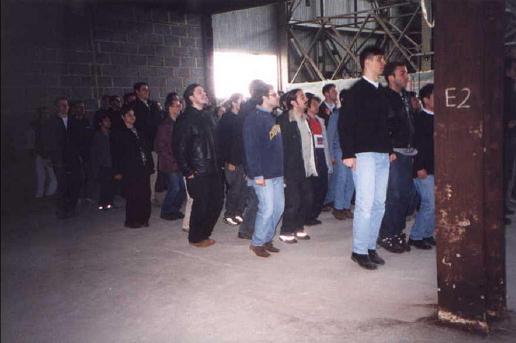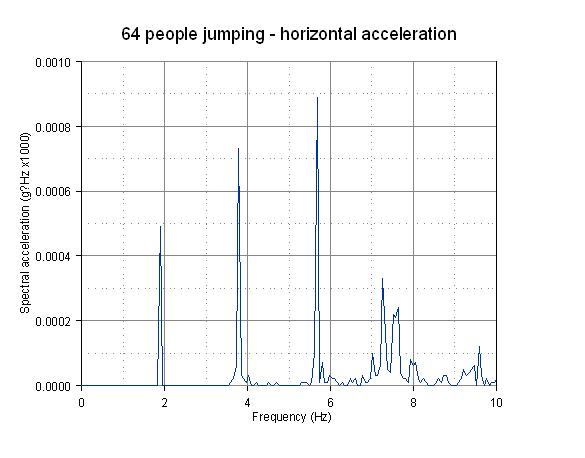A building floor

Fig. 12-11: A plane of a floor used for crowd jumping tests at its corner panel

Fig. 12-12: 64 students jumping on a floor in response to music

(a)

(b)
Fig. 12-13: The acceleration spectrum in the vertical and horizontal directions for 64 students jumping on a floor
A 9 m by 6 m test panel of a large composite floor is shown in Fig. 12-11. The structural response of the panel was measured for a group of 64 students jumping following a music beat (Fig. 12-12). At the centre of the test floor panel, the vertical acceleration was recorded for just over 16s, as was the horizontal acceleration in the direction orthogonal to the direction in which the students were facing. The peak vertical acceleration was 0.48g and the corresponding horizontal acceleration 0.03g. The autospectra for these records are shown in Fig. 12-13 and the characteristic response can be seen in both directions. The test area was part of the much larger flooring system (Fig. 12-11) and the vertical human loading was thus applied asymmetrically on the structure as a whole, which induced the horizontal motion of the whole building system.
